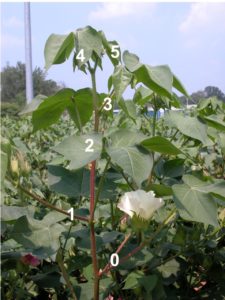The word ‘cutout’ is synonymous with NAWF5 and occurs when a field averages 5 or fewer nodes above the uppermost first-position white flower. Many fields have reached or past cutout in the past week. The white blooms present at cutout represent the last group of bolls that will likely make it into the picker basket. I really like ‘starting the clock’ when a field first drops below NAWF5 because some fields will ride NAWF5 for a week or two, and we want to put those fruit in the basket. Once cutout is reached, it is important to battle plant bugs until these last harvestable bolls have accumulated 250 DD60s, and this normally takes 10-14 days. I suggest increasing the plant bug threshold from 3 to 5 tarnished plant bugs per drop cloth once cutout is reached. You should manage stink bugs and bollworm for about another 7 days until 350 DD60s have accumulated.

Terminate insecticide applications for plant bugs, stink bugs and bollworms once fields have accumulated more than 350 DD60s since reaching NAWF5.
Both fall armyworm, stink bugs, and spider mites could potentially cause yield loss beyond NAWF5 + 350 DD60s. However, this almost always occurs when infestations were already present in the field. These termination rules presume you’ve been following good pest management practices. You shouldn’t walk away from fields just because they hit NAWF5 + 350 DD60s if significant pest problems are present.
What about late maturing fields? The last effective bloom date for Tennessee is August 12-15. This means that any bolls set after this date have < 50% chance of opening before a killing frost occurs (based on historical average weather). Thus, you should to protect any bolls set by August 15 for about another 14-21 days. I suggest terminating insecticide application in late maturing fields during the first week of September.
The point of all this is … don’t quit early on late maturing cotton. Use the NAWF5 + 350 rule or sometime during the first few days of September as a cutoff to spraying insecticides, whichever comes first.

